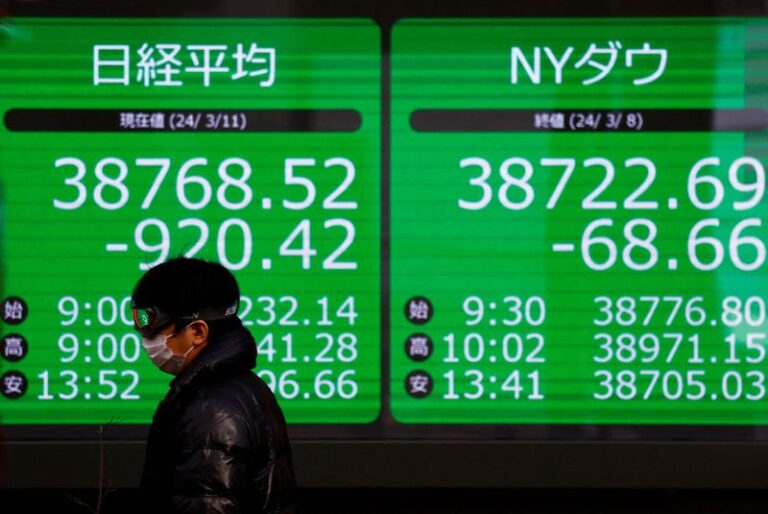Jamie McGeever
(Reuters) – Future outlook for Asian markets.
If there was no Wall Street, there would be no problem.
Asian investors opened in a bullish mood on Thursday, with Asian shares trading at a two-year high as strength in tech stocks and calmer global markets helped limit volatility and ease financial conditions.
U.S. markets were closed on Wednesday, but investors were not spooked by underlying concerns about liquidity. The MSCI Asia ex-Japan index rose more than 1% to its highest since April 2022, while the MSCI World index hit a record high.
Key events to watch in Asia Pacific on Thursday include interest rate decisions in China and Indonesia and New Zealand’s first-quarter GDP report.
The People’s Bank of China is likely to keep its benchmark lending rate, which is mainly used by the market as a gauge of lending standards, unchanged after leaving its Medium-Term Lending Facility (MLF) lending rate unchanged earlier this week.
But economic activity and indicators remain weak, increasing pressure for easing in the coming months.
Bank Indonesia is also expected to keep its key interest rate unchanged at 6.25 percent, according to a Reuters survey of economists, who have postponed their forecast for a first rate cut until late this year or early next year.
The change in outlook was partly due to the rupiah’s fall to a four-year low against the U.S. dollar, prompting the central bank to unexpectedly raise interest rates in April.
Inflation has been within the central bank’s target range of 1.5-3.5% for almost a year now, but the Federal Reserve’s “higher rates for longer” policy stance and a persistently strong dollar have tempered expectations of a rate cut.
It is not inconceivable that New Zealand may have fallen into a technical recession, albeit a very mild one, in the first quarter, with the consensus forecast in a Reuters poll calling for GDP growth of 0.1% quarter-on-quarter, following a 0.1% contraction in the October-December period.
Back in the markets, China may need to pull itself out of its slump to spark a surge in Asian stocks on Wednesday. The MSCI Asia ex-Japan index is up 12% from its mid-April lows, while the Chinese blue-chip CSI 300 index is flat.
Asian tech stocks are rising, as expected, fueled by Nvidia. Hong Kong’s Hang Seng Tech Index rose 3.7% on Wednesday, its best day this year.
If U.S. financial conditions are the main driver of the overall market, Asian investors should be bullish. Financial conditions in Asia are now the loosest they have been since March, according to Goldman Sachs, and the loosest they have been in two and a half years, according to the Chicago Fed.
In currency markets, the yen is trading near the lows where Tokyo recently intervened, but traders appear to be calm. Implied volatility in the one-month dollar/yen exchange rate fell for a sixth straight day on Wednesday to its lowest level since April 8.
Key trends that could give further direction to the market on Thursday include:
– China Interest Rate Decision
– Indonesia Interest Rate Decision
– New Zealand GDP (Q1)
(Reporting by Jamie McGeever and Deepa Babington Editing)

